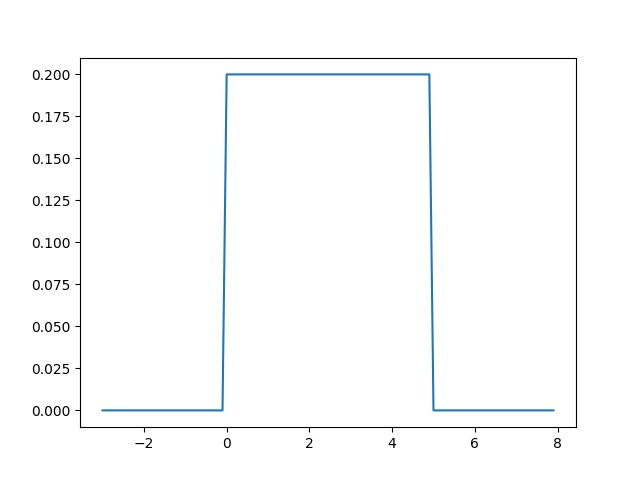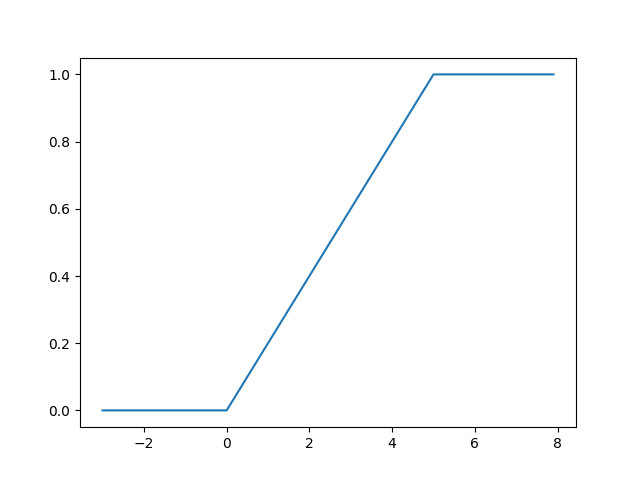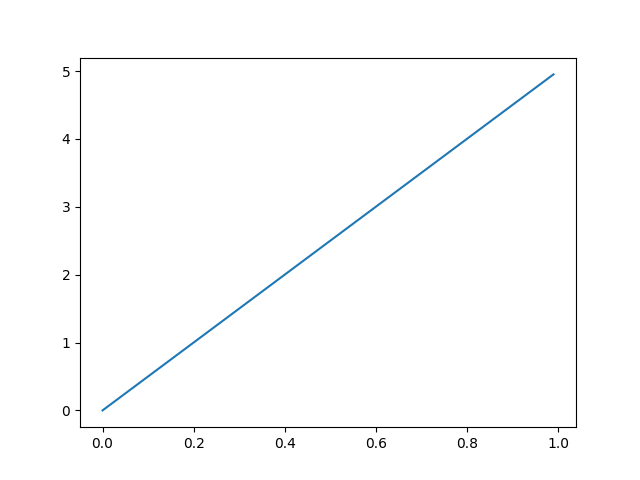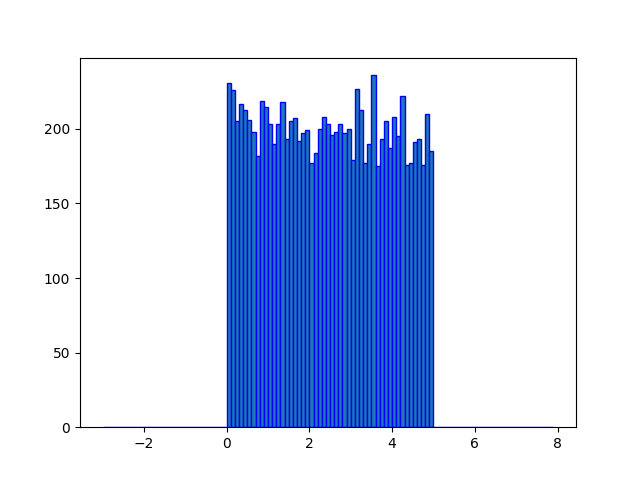SciPy - Uniform Distribution
Uniform Distribution describes an experiment where there is an random outcome that lies between certain bounds. The bounds of the outcome are defined by the parameters, a and b, which are the minimum and maximum values. All intervals of the same length on the distribution has equal probability.
The probability density function (pdf) of uniform distribution is defined as:

Where, a and b are lower and upper boundaries of output interval respectively.
An uniform distribution has mean (a+b)/2 and variance (b-a)2/12.
The cumulative distribution function (cdf) evaluated at x, is the probability that the random variable (X) will take a value less than or equal to x. The cdf of uniform distribution is defined as:

The scipy.stats.uniform contains all the methods required to generate and work with an uniform distribution. The most frequently methods are mentioned below:
Syntax
scipy.stats.uniform.pdf(x, loc=0, scale=1) scipy.stats.uniform.cdf(x, loc=0, scale=1) scipy.stats.uniform.ppf(q, loc=0, scale=1) scipy.stats.uniform.rvs(loc=0, scale=1, size=1)
Parameters
x |
Required. Specify float or array_like of floats representing random variable. |
q |
Required. Specify float or array_like of floats representing probabilities. |
loc |
Optional. Specify lower boundary of the output interval. Default is 0.0. |
scale |
Optional. Specify scale of the output. Upper boundary of the output interval will be (loc + scale). Must be non-negative. Default is 1.0. |
size |
Optional. Specify output shape. |
uniform.pdf()
The uniform.pdf() function measures probability density function (pdf) of the distribution.
from scipy.stats import uniform import matplotlib.pyplot as plt import numpy as np #creating an array of values between #-3 to 8 with a difference of 0.1 x = np.arange(-3, 8, 0.1) y = uniform.pdf(x, 0, 5) plt.plot(x, y) plt.show()
The output of the above code will be:

uniform.cdf()
The uniform.cdf() function returns cumulative distribution function (cdf) of the distribution.
from scipy.stats import uniform import matplotlib.pyplot as plt import numpy as np #creating an array of values between #-3 to 8 with a difference of 0.1 x = np.arange(-3, 8, 0.1) y = uniform.cdf(x, 0, 5) plt.plot(x, y) plt.show()
The output of the above code will be:

uniform.ppf()
The uniform.ppf() function takes the probability value and returns cumulative value corresponding to probability value of the distribution.
from scipy.stats import uniform import matplotlib.pyplot as plt import numpy as np #creating an array of probability from #0 to 1 with a difference of 0.01 x = np.arange(0, 1, 0.01) y = uniform.ppf(x, 0, 5) plt.plot(x, y) plt.show()
The output of the above code will be:

uniform.rvs()
The uniform.ppf() function generates an array containing specified number of random numbers of the given uniform distribution. In the example below, a histogram is plotted to visualize the result.
from scipy.stats import uniform import matplotlib.pyplot as plt import numpy as np #fixing the seed for reproducibility #of the result np.random.seed(10) #creating a vector containing 10000 #uniformly distributed random numbers y = uniform.rvs(0, 5, 10000) #creating bin bin = np.arange(-3,8,0.1) plt.hist(y, bins=bin, edgecolor='blue') plt.show()
The output of the above code will be:



